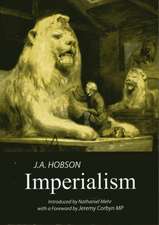Sudden Death: Medicine and Religion in Eighteenth-Century Rome
Autor Maria Pia Donatoen Limba Engleză Paperback – 14 oct 2024
| Toate formatele și edițiile | Preț | Express |
|---|---|---|
| Paperback (1) | 246.73 lei 6-8 săpt. | |
| Taylor & Francis – 14 oct 2024 | 246.73 lei 6-8 săpt. | |
| Hardback (1) | 1290.50 lei 6-8 săpt. | |
| Taylor & Francis – 18 mar 2016 | 1290.50 lei 6-8 săpt. |
Preț: 246.73 lei
Preț vechi: 311.28 lei
-21% Nou
Puncte Express: 370
Preț estimativ în valută:
47.22€ • 49.02$ • 39.37£
47.22€ • 49.02$ • 39.37£
Carte tipărită la comandă
Livrare economică 22 martie-05 aprilie
Preluare comenzi: 021 569.72.76
Specificații
ISBN-13: 9781032925905
ISBN-10: 1032925906
Pagini: 240
Dimensiuni: 156 x 234 mm
Greutate: 0.44 kg
Ediția:1
Editura: Taylor & Francis
Colecția Routledge
Locul publicării:Oxford, United Kingdom
ISBN-10: 1032925906
Pagini: 240
Dimensiuni: 156 x 234 mm
Greutate: 0.44 kg
Ediția:1
Editura: Taylor & Francis
Colecția Routledge
Locul publicării:Oxford, United Kingdom
Public țintă
AcademicCuprins
Introduction. Part I Sudden Death and the Physician’s Role in Society: Fears; The medico-legal enquiry on sudden death, or: the truth of the body and the public role of physicians; From the dead to the living: medicine and public health in the early 18th century. Part II Sudden Death in Medical Theory and Practice: A new stance on death: the mechanical medicine of Lancisi’s De subitaneis mortibus (1707); The pathological gaze: the problematic status of post-mortem evidence in early 18th-century medicine. Part III The Lost and the Saved: Sudden Death as an Ethical and Religious Issue: Death and the doctors: scientific queries and ethical dilemmas; In the hour of death; Looking for a heavenly protector: Saint Andrew Avellino, the ‘apoplectic saint’. Epilogue: was there ever a sudden death ‘epidemic’ in Rome?; Index.
Notă biografică
Maria Pia Donato is an associate professor of Early Modern History at the University of Cagliari, Italy, and chargé de recherche at the Centre National de la Recherche Scientifique, Institut d’Histoire moderne et contemporaine of Paris, France. She is the author of Accademie romane. Una storia sociale, 1671-1824 (Naples 2000) and numerous essays on the political, social and cultural life of modern Rome, the history of medicine, and the history of science.
Recenzii
Praise for the Italian edition: '... beautifully written and impeccably structured, with clearly stated research questions and a helpful bibliography of key works, this in-depth study is an intellectual delight.' Alexandra Bamji, Bulletin of the History of Medicine '...an excellent work that combines medical, social, and political history to examine the meaning of illness in early modern culture.' Anita Guerrini, The American Historical Review
Descriere
In 1705-1706, an ’epidemic’ of mysterious deaths terrorized Rome. Pope Clement XI’s physician, Giovanni Maria Lancisi, was ordered to perform a series of dissections to discover the cause of the epidemic, which hindered confession, thus threatening the victim’s salvation. The book that Lancisi subsequently published, De subitaneis mortibus (’On Sud












